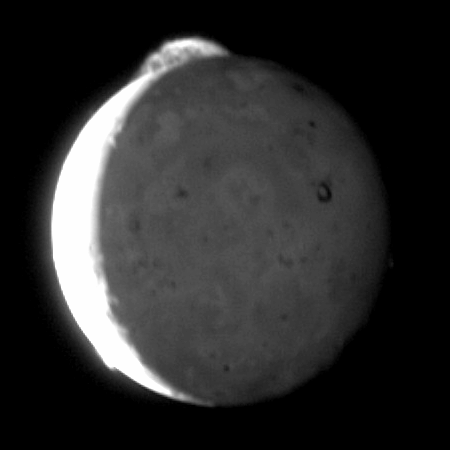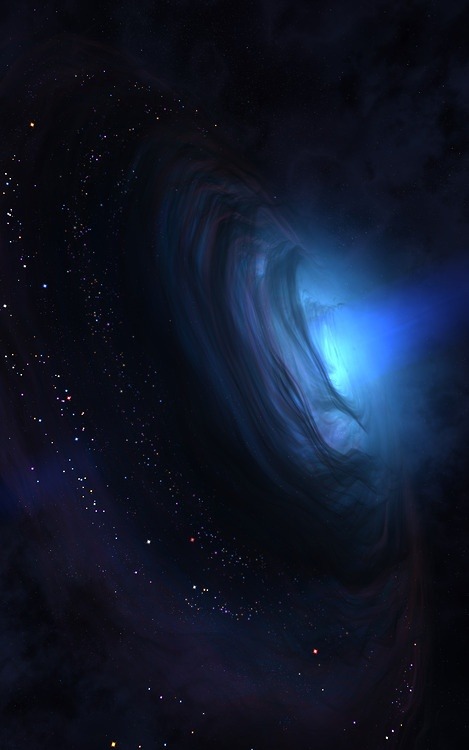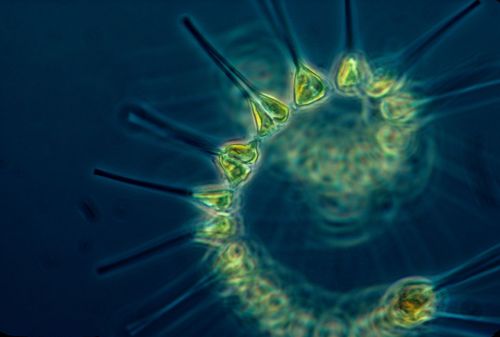"The Seychelles Has Become A Major Tourist Destination For Beachgoing And Scuba Diving, But It’s Not

"The Seychelles has become a major tourist destination for beachgoing and scuba diving, but it’s not only humans that are beginning to flock to this island.
In what marine biologists have described as a “phenomenal finding,” a survey of whales around the territorial waters of this archipelagic nation revealed the presence of blue whales—over a dozen.
It’s the first time they’ve been seen in these warm seas since 1966, and it’s a wonderful milestone in a long and increasingly successful recovery for the world’s largest animal.
The Seychelles are located in the Indian Ocean off the east coast of Africa, and they were historically a stopover point for Soviet whalers en route to Antarctica. The years 1963 to 1966 were particularly difficult for whales here, and many were taken before the International Convention on the Regulation of Whaling put an end to the practice of hunting baleen whales in 1973.
Since 1966, no dedicated investigation of whales in the Seychelles had been made until 2020, when a partnership of four universities conducted an acoustic survey over the period of two years.
They made five different sightings of groups of up to 10 animals.
“This was a phenomenal finding,” Jeremy Kiszka, a co-author of the paper from Florida International University, wrote in The Conversation. “We were prepared to not see any blue whales due to the high level of hunting that occurred fairly recently and absolutely no information was available since the last blue whale was killed in the region in 1964.” ...
The team behind the survey sent images taken of the whales’ dorsal sides to a database to see if any of them had been recorded before, and amid the reel, not a single one was a match with any other photographed whale.
This, the team suggests, means they have probably never been seen before, which for a species that big might seem strange, but along with there being only 5,000 to 15,000 on Earth, they migrate vast distances while diving deep, making recording their movements incredibly challenging.
The survey identified 23 whale species in total using hydroponic mics over 2 years with peak activity coming between December and April. This is a fascinating finding that suggests something about the seas around the Seychelles makes for excellent whale habitat."
-via Good News Network, April 30, 2024
More Posts from Outofambit and Others
Space is so creepy and wonderful. Who the hell needs hell when there’s space.
Like there’s an old constellation called Eridanus that you can see in the southern sky, and its not a very interesting constellation. It’s a river. It’s actually the water that’s pouring out of Aquarius, so in the sky it’s kind of boring. It’s a path of stars.
But within Eridanus, in between the stars, there’s a place where the background radiation is unexplainably cold. Because after the Big Bang, there was all this light that scattered everywhere, and it’s the oldest light in the universe, but we can’t see it. It’s so dim that it only shows up as a glow of microwaves, so to us, it just looks like the blackness of the night.
But there’s this spot in Eridanus where that little glow of ancient microwaves isn’t what it should be. It’s cold and dark.
And it’s enormous. Like a billion light year across. Of mostly just emptiness. And we don’t know why. One theory is that it’s simply a huge void, like a place where there are no galaxies. Voids like that do exist. Most of them are smaller, but they’re a sort of predictable part of the structure of the universe. The cold spot in Eridanus, if it were a void, would be so enormous that it would change how we understand the universe.
But another theory is that this cold spot is actually the place where a parallel universe is tangled with our own.






Io is the first Galilean moon of Jupiter, it is slightly larger than Earth’s moon. Io experiences intense tidal heating due to its elliptical orbit and orbital resonance with Europa and Ganymede. This makes Io the most geologically active moon in our solar system. Io’s interior is composed of molten iron sulphide, and the surface is a crust of sulfur and silicon. Io has more than 400 active volcanoes, which can eject lava plumes more than 500 kilometers above the surface. Some of the material from Io’s volcanic eruptions leaves the moon and orbits Jupiter, producing a plasma torus. Io also has lakes of lava called paterae, which can also create eruptions. The most dramatic paterae are Loki, Tvashtar, and Tupan. The constant volcanic activity creates a thin atmosphere of sulfur dioxide and sodium chloride. Io is an interesting model for exoplanets with intense geological activity, such as COROT-7b.

PART TWO AT LAST
okay y’all, you can click through the image on a blog, or click here to find my powerpoint on google drive. feel free to look through it, talk to me about it, talk to each other about it, whatever.
i have not edited this in the slightest, so take it all with a grain of salt. do have a look at the “notes” field for most of the slides; that’s where i wrote out (in varying degrees of detail/clarity) my thoughts on the subject at hand, but YMMV with that.
all that said please do credit me if you use this stuff for anything. and if you find any of my sources in the presentation lacking in citations, let me know!
feel free to join in the conversations over on slack (link is for signup, then find the #linguistics channel), or on tumblr! do also keep this post and other posts that involve speculation with respect to the Speech tagged with #not you DD, so that everybody’s butts are covered on that front.
thanks, cousins!

Sometimes I read stuff and I just wanna shake someone like "WHY IS NOBODY TALKING ABOUT THIS"

White dwarfs polluted with planetary debris
The Hubble Space Telescope has found chemical evidence for the building blocks for rocky planets in an extremely unusual place: the atmospheres of two burned-out stars. Called white dwarfs, these stars are small, dim shadows of stars that would have once been like our sun, and they reside 150 light-years from Earth in the young star cluster of Hyades. Hubble’s spectroscopic observations identified silicon and low levels of carbon, both of which are strong indicators of a rocky material similar to that which makes up Earth. “When these stars were born, they built planets,” said Jay Farihi, lead author of the study, “and there’s a good chance they currently retain some of them… Based on the silicon-to-carbon ratio in our study, we can actually say that this material is basically Earth-like.” The material is thought to have ended up in the atmosphere of these stars after they collapsed into white dwarfs, and the larger planets in their solar system nudged asteroids into star-grazing orbits. The stars’ gravitational pull tore the asteroids apart, and the pulverised debris fell into a ring around the white dwarfs and were eventually funnelled inwards to pollute the stars themselves. The discovery suggests that rocky planets may commonly assemble around stars, and may help us to understand what will happen to our solar system in five billion years, when our own sun burns out.
Astronomers have discovered the largest known structure in the universe, a clump of active galactic cores that stretch 4 billion light-years from end to end. The structure is a light quasar group (LQG), a collection of extremely luminous Galactic Nulcei powered by supermassive central black holes.


Astronauts just found life in space, we kid you not
Russian cosmonauts have discovered something remarkable clinging to the outside of the International Space Station: living organisms.
“Results of the experiment are absolutely unique" | Follow micdotcom
-
 queensnarf liked this · 3 weeks ago
queensnarf liked this · 3 weeks ago -
 latesummersolstice reblogged this · 3 weeks ago
latesummersolstice reblogged this · 3 weeks ago -
 latesummersolstice liked this · 3 weeks ago
latesummersolstice liked this · 3 weeks ago -
 valoricky liked this · 3 weeks ago
valoricky liked this · 3 weeks ago -
 katastrophicresonance reblogged this · 3 weeks ago
katastrophicresonance reblogged this · 3 weeks ago -
 katastrophicresonance liked this · 3 weeks ago
katastrophicresonance liked this · 3 weeks ago -
 blessedbrick liked this · 3 weeks ago
blessedbrick liked this · 3 weeks ago -
 barstoolblues liked this · 4 weeks ago
barstoolblues liked this · 4 weeks ago -
 cctinsleybaxter reblogged this · 4 weeks ago
cctinsleybaxter reblogged this · 4 weeks ago -
 oldrockformations liked this · 4 weeks ago
oldrockformations liked this · 4 weeks ago -
 newt-shnoz liked this · 4 weeks ago
newt-shnoz liked this · 4 weeks ago -
 starrydaemon reblogged this · 4 weeks ago
starrydaemon reblogged this · 4 weeks ago -
 cynosuura liked this · 4 weeks ago
cynosuura liked this · 4 weeks ago -
 rad-rat-with-a-tophat reblogged this · 4 weeks ago
rad-rat-with-a-tophat reblogged this · 4 weeks ago -
 somehowsentient liked this · 4 weeks ago
somehowsentient liked this · 4 weeks ago -
 sunnymoth liked this · 4 weeks ago
sunnymoth liked this · 4 weeks ago -
 microbial-dust reblogged this · 4 weeks ago
microbial-dust reblogged this · 4 weeks ago -
 ill-illuminated liked this · 4 weeks ago
ill-illuminated liked this · 4 weeks ago -
 still-july liked this · 4 weeks ago
still-july liked this · 4 weeks ago -
 adorable-animals-daily liked this · 4 weeks ago
adorable-animals-daily liked this · 4 weeks ago -
 thepratandtheidiot liked this · 4 weeks ago
thepratandtheidiot liked this · 4 weeks ago -
 alxblack17 reblogged this · 4 weeks ago
alxblack17 reblogged this · 4 weeks ago -
 leafecho liked this · 4 weeks ago
leafecho liked this · 4 weeks ago -
 brimstone-cowboy reblogged this · 4 weeks ago
brimstone-cowboy reblogged this · 4 weeks ago -
 brimstone-cowboy liked this · 4 weeks ago
brimstone-cowboy liked this · 4 weeks ago -
 anomalocaris-here reblogged this · 4 weeks ago
anomalocaris-here reblogged this · 4 weeks ago -
 anomalocaris-here liked this · 4 weeks ago
anomalocaris-here liked this · 4 weeks ago -
 hawkpartys reblogged this · 4 weeks ago
hawkpartys reblogged this · 4 weeks ago -
 whalenagain reblogged this · 2 months ago
whalenagain reblogged this · 2 months ago -
 whalenagain liked this · 2 months ago
whalenagain liked this · 2 months ago -
 larata78 liked this · 2 months ago
larata78 liked this · 2 months ago -
 mygeochemicalromance reblogged this · 2 months ago
mygeochemicalromance reblogged this · 2 months ago -
 mondainai liked this · 5 months ago
mondainai liked this · 5 months ago -
 watsdaughter liked this · 6 months ago
watsdaughter liked this · 6 months ago -
 hearty-durian reblogged this · 7 months ago
hearty-durian reblogged this · 7 months ago -
 seamonsterscientist reblogged this · 7 months ago
seamonsterscientist reblogged this · 7 months ago -
 steelroses reblogged this · 7 months ago
steelroses reblogged this · 7 months ago -
 sapphee reblogged this · 7 months ago
sapphee reblogged this · 7 months ago -
 sapphee liked this · 7 months ago
sapphee liked this · 7 months ago -
 bandlecitymage reblogged this · 7 months ago
bandlecitymage reblogged this · 7 months ago -
 ttacc liked this · 7 months ago
ttacc liked this · 7 months ago -
 qomrades liked this · 7 months ago
qomrades liked this · 7 months ago -
 rattleroze liked this · 7 months ago
rattleroze liked this · 7 months ago -
 fits-like-a-fist-in-the-eye liked this · 7 months ago
fits-like-a-fist-in-the-eye liked this · 7 months ago -
 cryptidfuckery reblogged this · 7 months ago
cryptidfuckery reblogged this · 7 months ago -
 okgal21 reblogged this · 7 months ago
okgal21 reblogged this · 7 months ago -
 okgal21 liked this · 7 months ago
okgal21 liked this · 7 months ago -
 pa-pa-plasma reblogged this · 7 months ago
pa-pa-plasma reblogged this · 7 months ago
A personal temporospatial claudication for Young Wizards fandom-related posts and general space nonsense.
288 posts
